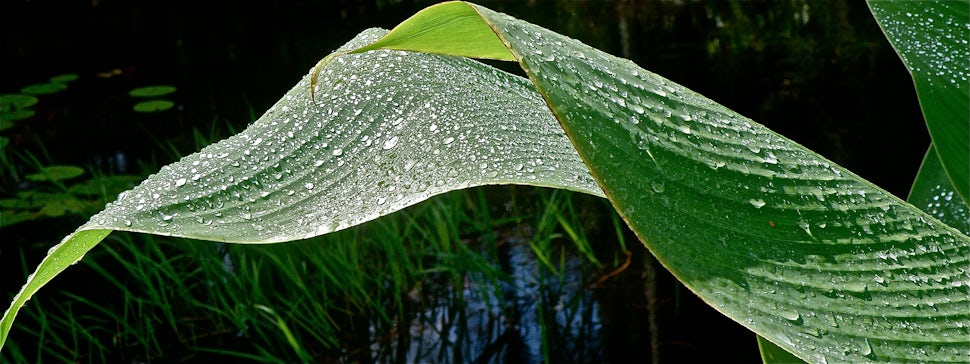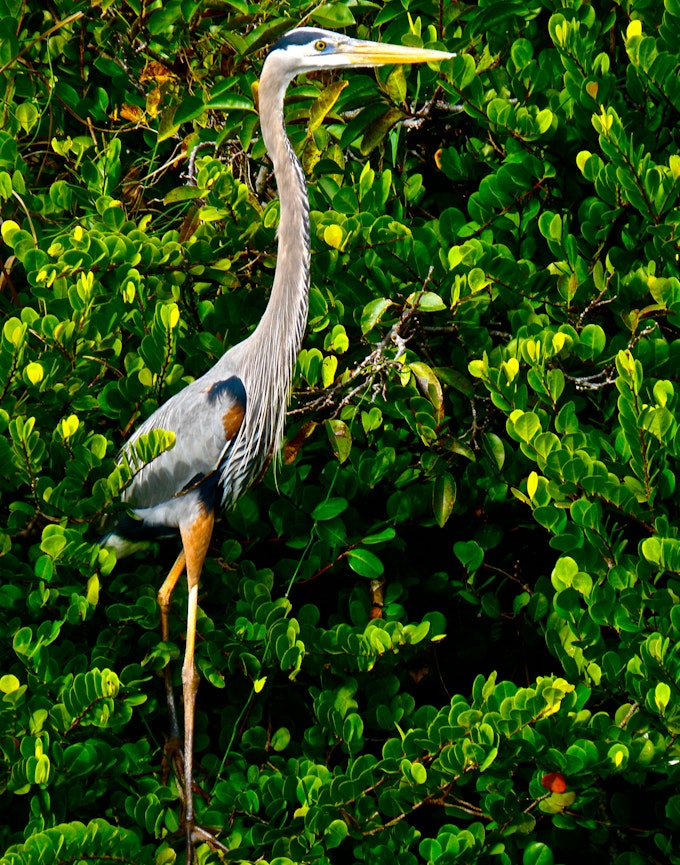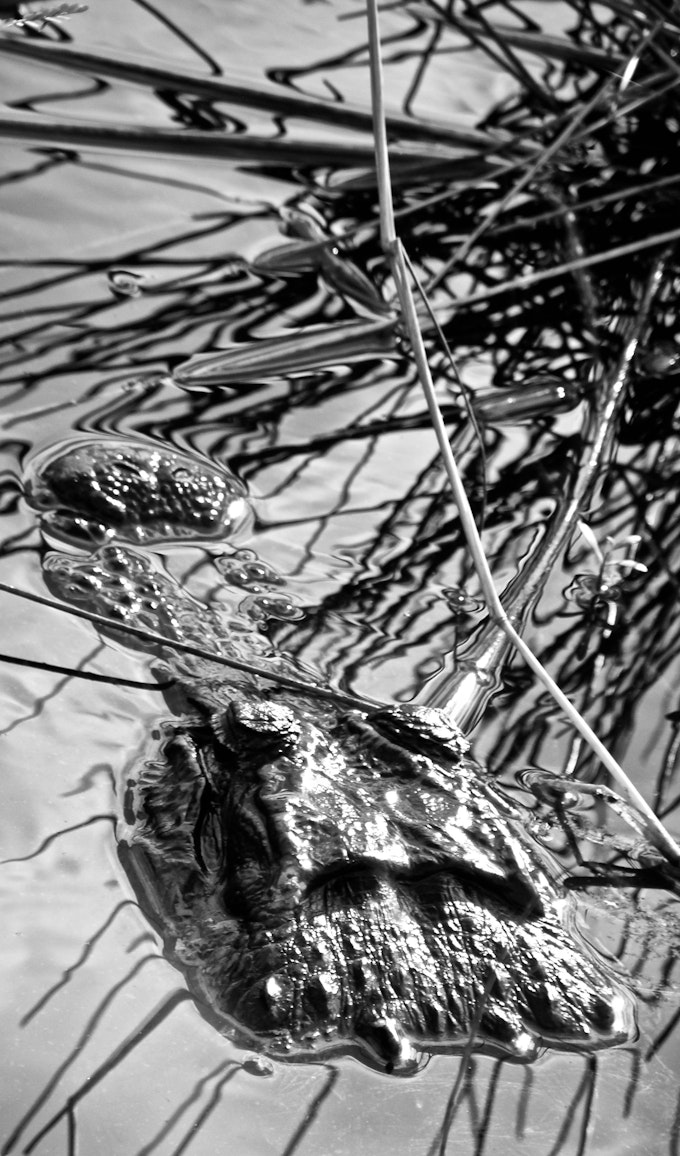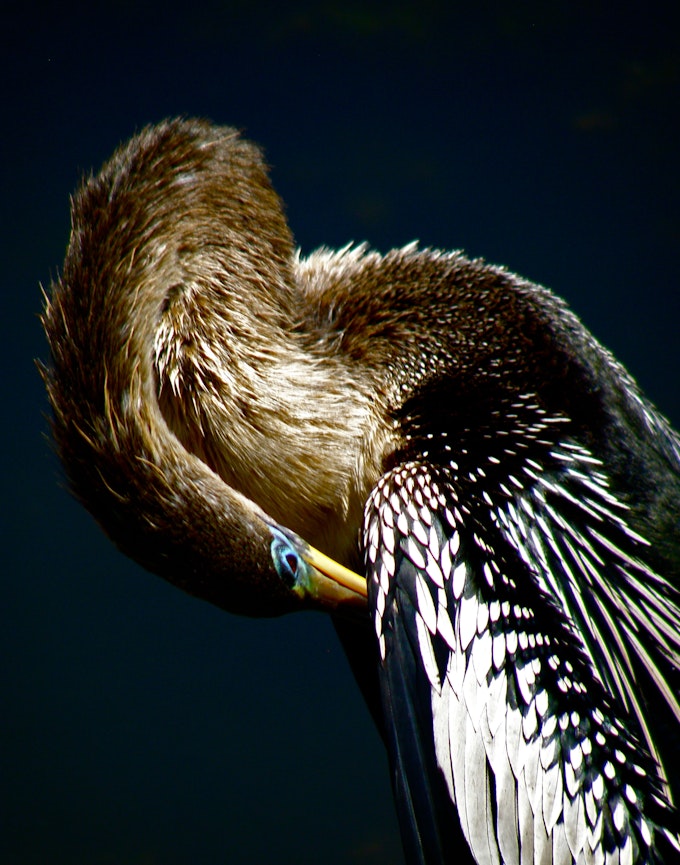It's Now or #Neverglades: The Impact of Climate Change on Everglades National Park
Climate change and sea level rise threatens a life and death scenario for Everglades National Park. Are we doing enough to save the park?

The Good
I grew up in South Miami, just 15 miles away from the expansive sawgrass river that comprises the majority of Everglades National Park. As a kid, I am not sure I really appreciated the intimate beauty of the park. Once I got older and learned how much the park truly has to offer, I started to realize how the size, biological diversity, and ecological functionality had all been massively compromised by both direct and indirect human interference. To understand the reasons why we should do everything in our power to protect not only just this national park, but also parks and wilderness areas all over the country, I believe we must first see and ultimately feel the essence of Everglades National Park.
One mistake I made when I was growing up was trying to compare Everglades National Park to other National Parks I had been to. It did not seem as grand as Yosemite, as rugged as Acadia, or as otherworldly as Yellowstone. It was flat, and most of it looked to me like just a lot of grass. It was not until one of the first times I spoke to iconic Florida landscape photographer Clyde Butcher that I really started to understand what made the Everglades so special. He told me something along the lines of, “Yeah those parks out west are pretty nice. Some of them have awesome rocks, but you know something about rocks? They aren’t alive. Everything that surrounds you here in the Everglades is alive. That’s what makes it beautiful.”
American Alligator amongst Sawgrass
When you simply look at the park with wide eyes, the seemingly endless sea of sawgrass can seem uneventful, maybe even a little boring. However, if you look a little closer, you will find dense hardwood hammocks nestled on high elevation (1-3 feet above sea level) islands surrounded by miles of slow moving water. In and around these islands you can find some of the most diverse and endemic displays of flora and fauna in the country.
Look even closer, and you will find brilliant examples of how precious and unique life really is in the Everglades. This includes the extraordinary coexistence of the American Alligator and the American Crocodile, the bloom of the endangered and majestic Ghost Orchid, and the sight of a radiantly colored Purple Gallinule hopping from one lily pad to another with the help of proportionally enormous feet. In the drier winter months, much of this wildlife congregates around some of the more permanent bodies of water, displaying an incredible spectacle of biodiversity.
Further south, the River of Grass opens up into the Florida Bay and the Ten Thousand Islands, most of which are made up of sandy shoals and thick mangrove forests. The shallow waters and the underground labyrinth that the mangroves provide make this area one of the most fertile flats fishing spots in the world.
Between Everglades National Park and its surrounding natural sanctuaries, not only is this part of Florida the real gem of the state, but it is also an economic powerhouse. In 2015 alone, Everglades National Park attracted just under a million visitors, and that is not even counting the large number of people that access the parks waters by boat from nearby marinas. Between the spending of these visitors and the jobs they support, in 2015 the National Park had a capital benefit to the local economy that totaled over $155 million and supported over 1,552 jobs, according to the National Parks Service.
As lucrative as visitation alone is to the Everglades, it would be particularly unfair to leave out the economic benefits to South Florida’s water, real estate, and fishing/hunting industries. After all, the Everglades naturally filter water for almost 8 million Floridians. However, as South Florida’s population rises, pressure mounts on our natural water filter. This has led to the increased need of rather costly water treatment facilities. Preserving and reclaiming the wetlands in the Everglades from agricultural use would help relieve this pressure point and grant South Florida much needed additional access to clean water. Better access to clean fresh water means lower living and municipality operating costs, which keeps the area attractive to the largest South Florida industries, including tourism.
Miami Skyline
Additionally, because of this increased access to both drinking water and recreational water, the real estate market in South Florida is expected to rise. According to a study done by the University of Vermont on how access to clean water affects property value; “A one meter increase in water clarity is equated with a nearly 3% average increase in single family home value, and a 37% average increase in seasonal home value.” Clean water access would be expected to have a similar monetary effect on the real estate industry in South Florida too.
The impact of a cleaner source of fresh water does not stop there, with hunting and fishing industries set to boom as well. Native wildlife would quickly return to healthy populations, allowing recreational and commercial fisherman and hunters to sustainably reap the benefits. Although Everglades National Park carries a lot of sentimental value to many people who love and depend on the success of the park, it is also a vital organ for the economic success of South Florida.
The Bad
I hate to break it to you, but all is not well in Everglades National Park. Even with all of the selling points listed above, investment in the park is a timely process that has been dragged out for years and is not a top priority for local, state, and national politicians. Unfortunately, time is not something that Everglades National Park has to spare right now, and immediate solutions are few and far between. Due to the extremely low elevation of the majority of the park, climate change and sea level rise is already causing severe challenges across the entire coastline of the park.
Sea level rise is really starting to get some real attention in South Florida, as many beach-goers have found the streets of Miami Beach submerged under water during some spring tides (Tides having higher high tides and lower low tides that occur twice a month). A couple of the more severe instances caught wind, and almost instantly, a $400 million restoration project was started to elevate the streets and revamp Miami Beach’s antiquated sewer systems. That is all well and good, but what about the Everglades?
Everglades National Park is kind of like the stereotypical middle child of South Florida. It is often overlooked, despite being very sensitive and important. To politicians, there are more pressing matters, but to the Everglades, the changes and decisions we make in the very immediate future could make or break the National Park. Due to the extreme flatness of the park, just an inch of sea level rise could mean the salt and brackish water barrier could move miles inland at some points.
Along with such a shift in the salinity of the surrounding water, a massive change would occur in the variety of vegetation growth in these coastal areas. Since the sea level rise also affects the salinity of the groundwater, the quality of the water source for fresh water dependent vegetation is being compromised. There are serious doubts that the plants which grow just inland from the salt and brackish water dependent mangrove forests can handle this rapid increase in salinity. This means that whole communities of freshwater-dependent forests will at best retreat further inland, or at worst, vanish all together. This vegetation loss could just be the tipping point for the 67 threatened or endangered species in the park.
Blue-eyed Anhinga
I really wish I were talking about a hypothetical scenario here. However, this issue is real and it is happening right now. Due to a century of detailed record keeping from a tide gauge in Key West, I cringe as I type that over the past 100 years, sea level has already risen .75 feet, and is projected to rise an additional 1.87-3.6 feet by the end of the century. Although the Everglades have displayed some resilience, it would be a tough ask to try and convince anyone that this natural habitat could take much more of an increasingly steep rate of sea level rise. Enough is enough, and we are the only species on this planet that can fix the problems we have created. However, as sea level rise has already begun to pick up the pace, the time to take decisive action could not come sooner. This PBS video describes some of these issues perfectly.
The Action
When it comes to climate change, there is no stop-plug to keep global temperatures from rising and the shoreline from encroaching on shallow land. There is no one-size-fits-all approach to take either. In order to preserve our National Parks, efforts both large and small must be organized and have a collective theme to gain any traction and make any difference. There are many opportunities to give our parks a fighting chance to survive, but we cannot rely on other people to take those opportunities for us.
Most importantly, climate change and the survival of our natural world is not a matter of the left or right, black or white, poor or rich. Fighting to slow down climate change simply comes down to love. Love between people to set aside differences and focus on common interests, such as wilderness and its wildlife. On top of that, we need to love our wild spaces so much, that we want our children and grandchildren to have the opportunity to see them. When I have kids, I want to be able to take them to the Anhinga trail in the Everglades, where I can show them the best example of peaceful coexistence between gathering birds, fish, mammals, and reptiles. I fear that by the time that point in my life comes, the park will already be well on its decline, in the state of a barren wasteland that once was a thriving ecosystem, full of life. Still, I believe that if we are able to unite our efforts to protect our national parks simply through the love that we have for our parks, then I will remain optimistic.

Below, I will list some daily habits that you should do, if you aren’t already, that can make serious impacts in reducing our carbon footprint. Our carbon footprint is the single largest deciding factor to sea level rise, and ultimately the life of Everglades National Park. We need to ask ourselves every day if we are doing everything we can to incorporate these greenhouse gas saving initiatives in our every day lives.
- Shop Less- You don’t need to go full-blown minimalist to ask yourself two questions before you indulge in a shopping spree: “Am I really going to use this down the road?” and “What value will this add to my life?” It has been proven that people with less clutter can focus better and are happier overall.
- Recycle- Plastics are made using a lot of coal, natural gas, and crude oil. Paper is obviously made from trees. 1KG of aluminum cans uses almost 15 liters of water to produce. Make more use out of these materials by recycling and you will slash the consumption of those raw materials into a fraction.
- Carpool- This has become more convenient than ever with services like Uber Pool and Lyft Line. Going about it the old school way works too!
- Eat Less Beef- You would be surprised how much cows eat, burp, and poop… all day long. Their burps contain ridiculous amounts of methane, another greenhouse gas. I love a good steak just as much as the next guy, but if we treat it as a luxury instead of a staple part of our diet, then we will help the planet a bit more when we don’t have it and enjoy it that much more when we do.
- Start Gardening- Growing your own fruits and veggies will not only be super healthy and tasty, but it will also be great on your wallet. Reducing our reliance on big agriculture by turning previously unproductive spaces into productive food growth is crucial and helps make the world a bit more carbon absorbent.
- Compost- Its honestly a little bit gross, and I was reluctant to it at first, but it does give you some great soil to help with your green thumb, or lack thereof.
Adapting your day-to-day habits to incorporate some of the actions above is a great start to protecting our national parks. Still, there is a lot of work to do, but thankfully there are loads of low hanging fruit for easy picking. The ideas listed below go a step further from your personal habits, and incorporate some ways to get involved with organizations and policy makers with interests to protect Everglades National Park.
- Call and email Florida Politicians. You don’t even need to be a Florida resident to make the call that can make a huge difference. Trust me, everyone is allowed to care. Let them know that you care about the survival of Everglades National Park, and would like their decisions and votes to show that they will recognize and mitigate the severity of the threat on-hand by incorporating climate change battling initiatives into their governing platforms. https://captainsforcleanwater.org/contact-a-politician/
- Get involved with your local Sierra Club Chapter. The Sierra Club has consistently been one of the most powerful forces in protecting wilderness areas all over the country and the Florida Chapter holds regular meetings discussing the current threat on the Everglades. http://www.sierraclub.org/florida
- Volunteer and donate to the National Parks Conservation Association, who pushed for the introduction of Florida Bill SB10, which will push for the purchasing of farmland south of Lake Okeechobee to restore the headwaters of the Everglades https://secure.npca.org/site/Donation2;jsessionid=00000000.app30101b?df_id=7600&mfc_pref=T&7600.donation=form1&_ga=1.65845611.497542456.1488001219&NONCE_TOKEN=FFC965C28D66293AB5C8DBEB7320E4BD#sm.000019l4ssz66idwksn1rfgqd91or
- Dontate/Join Captains for Clean Water, an Everglades exclusive organization with efforts to regain the natural flow of water into the Everglades https://captainsforcleanwater.org/giving/
Works Cited
1. Fuller, D. O., & Wang, Y. (2013). Recent Trends in Satellite Vegetation Index Observations Indicate Decreasing Vegetation Biomass in the Southeastern Saline Everglades Wetlands. Wetlands,34(1), 67-77. doi:10.1007/s13157-013-0483-0
2. Jevrejeva, S., Moore, J., & Grinsted, A. (2012). Sea level projections to AD2500 with a new generation of climate change scenarios. Global and Planetary Change,80-81, 14-20. doi:10.1016/j.gloplacha.2011.09.006
3. Voigt, B., Lees, J., & Erickson, J. (2015). An Assessment of the Economic Value of Clean Water in Lake Champlain. Lake Champlain Basin Program,81, 1-53. Retrieved February 26, 2017, from http://www.clf.org/wp-content/...
4. Kirk Fordham Miami Ceo, Everglades Foundation. (n.d.). Guest commentary: Measuring the Economic Benefits of America's Everglades Restoration. Retrieved February 28, 2017, from http://archive.naplesnews.com/opinion/guest-commentary-measuring-the-economic-benefits-of-americas-everglades-restoration-ep-393055543-343100322.html
5. National Climate Assessment. (n.d.). Retrieved February 28, 2017, from http://nca2014.globalchange.gov/report/response-strategies/decision-support#submenu-highlights-report-findings
6. Rising sea levels threaten Florida's Everglades. (n.d.). Retrieved February 28, 2017, from http://www.pbs.org/newshour/bb...
7. Save Florida's Waters. (n.d.). Retrieved February 28, 2017, from https://captainsforcleanwater....
8. Sea-Level Rise In Everglades National Park. (n.d.). Retrieved February 28, 2017, from https://www.nps.gov/ever/learn...
9. The Florida Senate. (n.d.). Retrieved February 28, 2017, from https://www.flsenate.gov/Sessi...
10. University of Miami . (n.d.). Retrieved February 28, 2017, from http://www.miami.edu/index.php...
11. Everglades restoration and sea level rise. (n.d.). Retrieved February 28, 2017, from http://www.evergladesfoundation.org/2014/06/09/everglades-restoration-and-sea-level-rise/
We want to acknowledge and thank the past, present, and future generations of all Native Nations and Indigenous Peoples whose ancestral lands we travel, explore, and play on. Always practice Leave No Trace ethics on your adventures and follow local regulations. Please explore responsibly!
Do you love the outdoors?
Yep, us too. That's why we send you the best local adventures, stories, and expert advice, right to your inbox.











